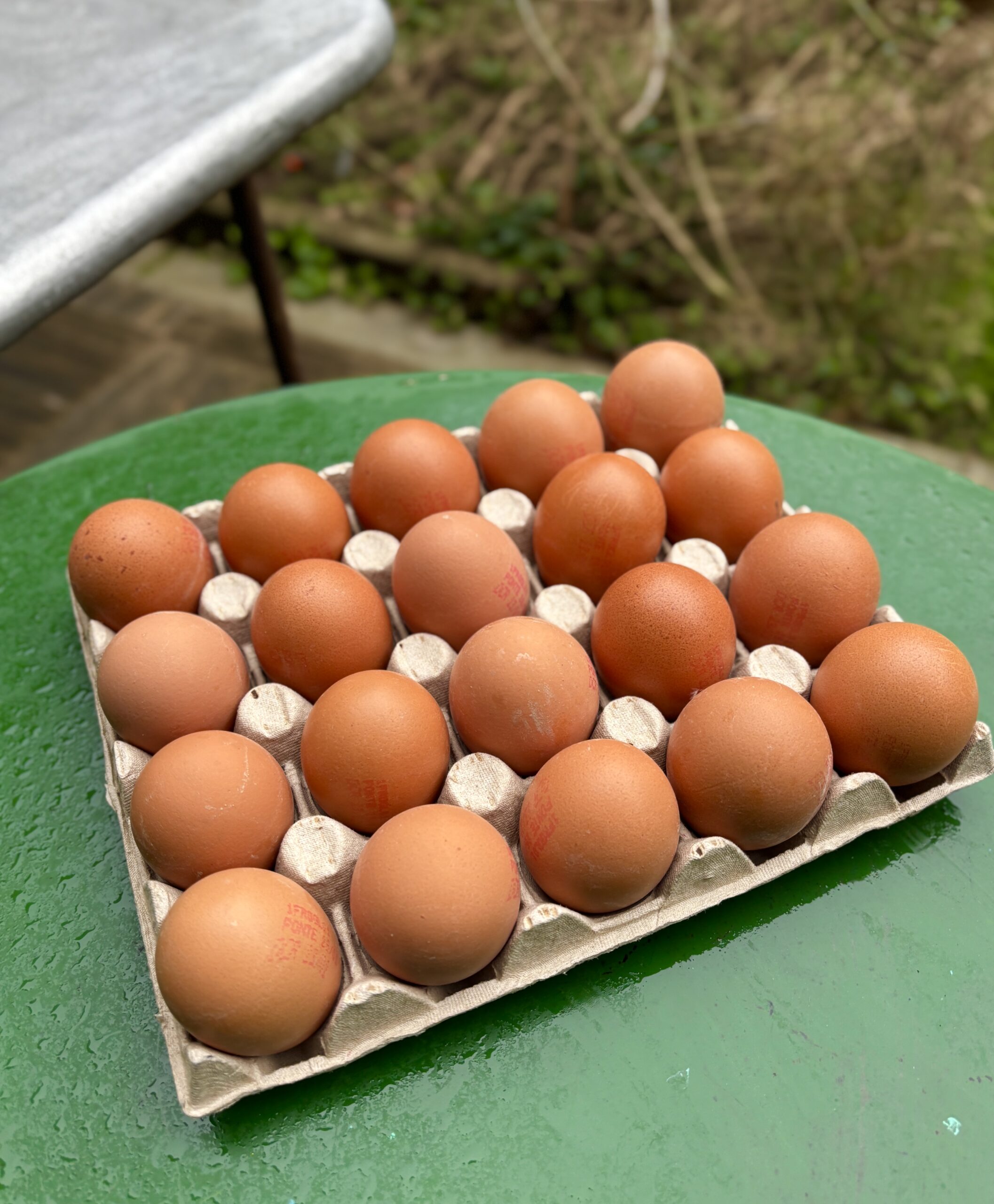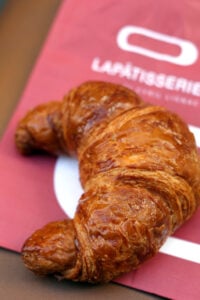Lisbon
If anyone of you has been planning to go to Portugal, I’d say “Don’t walk…run!” to get there. Except that’s perhaps only possible if you live close by, in Spain. And in which case, you’d probably take the train.
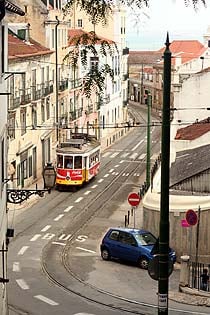
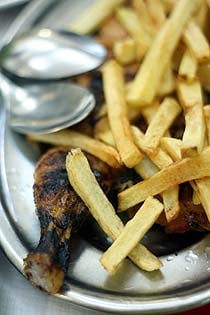
Here’s some various and sundry impressions and images from my trip. Apologies to any Portuguese folks for mangling their language. And thanks to the readers who offered ideas for places to go and things to eat. I would agree that Lisbon is a terrific place to spend a few days, but if you go, it’s worth either renting a car or taking the train to explore some of the beaches and small towns outside of the city.
And if you don’t learn any other word in Portuguese, the most important word in the language is churrasquiera….or ‘barbeque’.
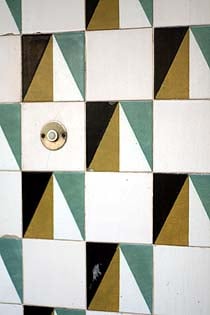
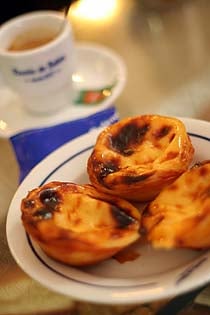
What I love most about Lisbon is that there’s still plenty of relics from the decades of the recent past, namely bits and pieces of art nouveau and art deco everywhere. And the tilework, which you can find all around the city is marvelous, constantly surprising and very colorful.
Equally marvelous, and edible to boot, are natas; small custard-based tartlets meant to be consumed en masse. Believe me, if I could’ve fit all three into my mouth at once I would have. No one is shy in Lisbon: you simply belly-up to the counter and order a plateful.
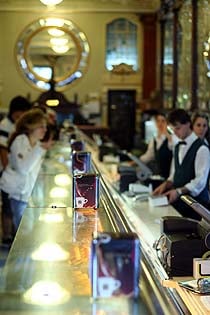

Although they vary in quality from place to place in Lisbon, some of the best natas and other pastries are at Pastelaria Versailles.
Right around the corner from my hotel, stopping there each afternoon was de rigueur for a few sweet bites with a small cup of strong coffee, which is uniformly good in Lisbon.
Of course there are some not-so-fabulous pastries elsewhere as well, kinda silly ones, but they’re awfully fun to look at.

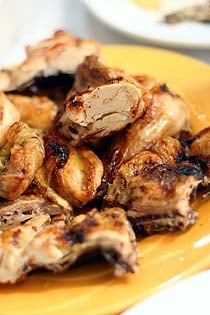
At my first dinner out at Bota Alta, when we sat down, there was a plate with two rounds of small, dry cheese already on the table. I wasn’t quite sure what to do, but it seemed like everyone else around me was digging in, so I did too. With the exception of the time I was served a heaping bowl of sinewy chicken innards stewed in tomato sauce in Spain, that’s normally a good strategy. But later I learned that just because it’s on the table doesn’t mean it’s free. Those little packets of butter? 60 centimes. The sardine paste? 1€. Even the bread costs, although I found the bread in Portugal to be consistently worth it.
The cheese was definitely worth it as well, although the little packet of sardinha paste was a bit too reminiscent of a feline’s Fancy Feast and I was sorry I opened one. I was careful not to do it again.
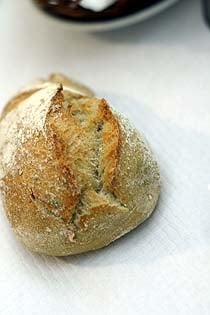

There’s a place in Paris that does a terrific roast chicken and it’s owned by Portuguese folks. They’re very good, but I was happy to be in Portugal at ground zero for them.
But they’re not just ordinary chickens. Each is dry-rubbed with lots of spices and a good dose of salt, as well as fresh garlic, before the spatch-cocked birds take a spin around the churrasco. Opening up the birds means an extra-generous amount of the skin is super-crisp, so the big appeal is tearing off bits of crackly, salty skin and savoring them. And in Lisbon, the roasted birds are everywhere. Of course, I partook as much as possible. And to quench the inevitable thirst from all the salty food, there’s lots of refreshing, slightly-spritzy vinho verde wine to wash it all down with.
The grill restaurants also serve a lot of seafood, including skewered shrimp. At the table, as they hover over a pan of spiced melted butter seasoned with bits of orange zest, the trick is getting them off the skewer without splashing the melted butter on one of the only two shirts you brought on vacation with you.
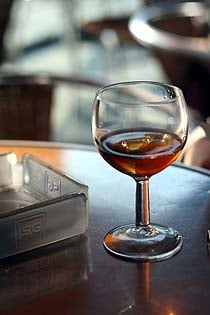

Although most of us normally think of port as something for after dinner, white port makes and excellent apértif as well. Try it! I certainly did. On several occasions.
Just to blend in with the locals, mind you.
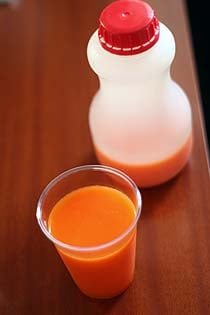
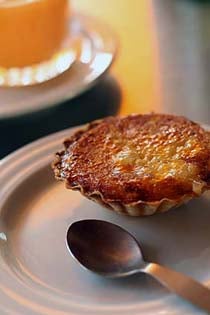
And just when you think you can’t eat another sweet little tart, you discover the cousin to the nata—the rich pastries made with queijo, a slightly-sweet cheese filling. At the risk of getting a few pointed comments, I have to say that I liked them better than the natas and was sorry that I discovered them on my last day.
By the end of the trip, all I wanted was fruit juice. (Okay, and more of those little tarts.) Perhaps because of the Portuguese connection with Brazil, or their location closer to the equator than Paris, fresh-pressed fruit juice is relatively easy to get almost everywhere. My favorite was cenoura-laranja, carrot-orange, although you can get lots of different kinds and blends to sip and refresh yourself.
Lisbon Addresses
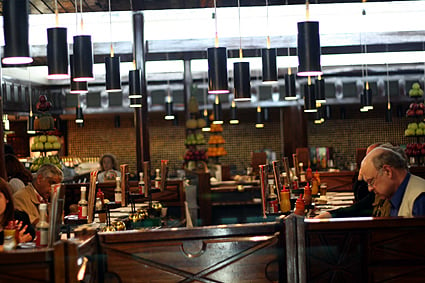
El Corte Inglés
Avenida Antonio Augusto de Aguiar, 31
This huge department store has a superb, if somewhat chic, cookware department. But the real draw is the upscale supermarket in the basement. The assortment of Spanish and Portuguese hams and cheeses is outstanding and one could easily spend a few hours strolling the aisles and stocking up on bolos and other treats for a picnic.
Restaurante Principe Calhariz
C. Combro, 28
A friend recommended the best thing to do in Lisbon is just to dine in everyday restaurants where the window’s full of fresh fish and there’s a grill in front. Happily, I took her advice. At this place the waiter was great and went out of his way to make us hapless Anglo-and Francophones happy. I loved the shrimp served on a skewer, espetada Gambas hovering over a pool of spicy, citrusy butter. And the service, of course.
Churrasco da Graça
Largo da Graça, 43
Starting with queso fresco, a soft, pillowy cheese, I knew from passing the spit by the entrance that I’d want to start with Frango Churrasco, a salty charcoal-broiled chicken. The grilled sardines with steamed potatoes made a great first coarse as well. Afterwards, we headed to the nearby Esplanada da Ingreja da Graça to sip a tiny coffee, known as a bica, while overlooking Lisbon. No one seemed to notice when I loosened my belt. (Or they were just being polite.)
Restaurante Bota Alta
T. da Queimada, 37
Started with salty round of dried cheese (see a trend?) queso seco Nisa and order whatever the waiter advises. The best was the Bacalhau à Brés: shredded salt cod, potatoes and eggs scrambled together. I dream about this dish and was sorry I didn’t go back and have it again.
1 de Maio
Rua da Atalaia, 8
Although my TimeOut guide touted this as a “budget classic”, it was the most expensive meal of the trip. I think it was a lovely platter of clams, called amêijoas we had before dinner, swimming in excellent butter which got sopped up by all the hearty Portuguese bread. That was followed by a drastically-overcooked piece of atum (tuna), which in France, would be called like a “semelle“, the sole of a shoe.
Pastelaria Versailles
A. da Republica, 15A
My favorite
Pasteis de Belém
Rua de Belém, 84-92
Another great pastry shop, world-famous for their natas…which are worthy of the adoration. I ate as many as I could before being pushed aside by others vying for the valuable real estate I was taking up at the counter here.
Restaurante Nicola Rossio
Rua das Fontainhas
I loved the stainless-steel deco work, and although it was touted as a ‘literary café’, we were there for the food. The Bacalhau a Lisbonense was a riff on the shredded salt cod dish from Bota Alta, which seemed very appealing since it was cold and drizzling outside.
Galeto
Avenida da Republica, 14
This place had everything: the immaculately-preserved retro design, the cool waiters in suits, and the generous display of fruits and pastries as we walked in. The only thing missing was great food. A perfect 60’s interior, the food was lackluster. I opted for the tortilha Espanhola, which was passable but uninteresting. The caldo verde we started with was fine but I wasn’t asking for the recipe.
But just like few people go to diners for the food, the real attraction was the scene, and the fabulous dining room. I imagine late at night is when the action begins, as prices rise after 10pm. Speaking of rising prices, I was a bit surprised at how expensive our simple meal was. Like your local diner, stick with hamburgers, salads, and egg dishes.
(And first they told me I could take pictures. Then they came by and told me I couldn’t. Then they had some sort of meeting downstairs and said it was okay. But when I snapped a couple of photos, they told me I had to stop.)
Hotel
I stayed at the Hotel Principe Lisboa. It was very clean and modern, and centrally-located. The price was excellent for the quality. A 30 minute walk from the lively Bairro Alto, or quick metro ride away. The downside is there’s construction outside while they build a new metro line (through 2009, so they say), so you should request a room in the back when booking. The multi-lingual staff was very nice and helpful.
Transit Tips
My recommendation is to buy a 5-day pass for both the metro and the bus system, which currently costs 13€. The metro is fast and efficient and the buses go everywhere. Note that they’re two different systems and normally the same ticket isn’t valid on each, which the woman at the tourism office told me otherwise. Thankfully the police that stopped us on the bus didn’t make us pay the 150€ fine. (Another reason to love Lisbon.)
Lisbon is a small city and you can navigate some of it by foot, although the steep hills make the charming trams even more appealing.
Taxis are cheap and plentiful, but make sure the driver flips on the meter, especially from the airport, which is less than 20 minutes away from the city center. My driver from the airport told me to “calm down” when I asked him to turn on the meter (ha!) then tried to overcharge me nevertheless when we arrived. So don’t be afraid to speak up.
You can get pre-paid taxi vouchers at the tourism office at the airport which guarantees the fare and includes baggage fee and tip.
For more Information about Lisbon:
Thanks again everyone for all your suggestions!











